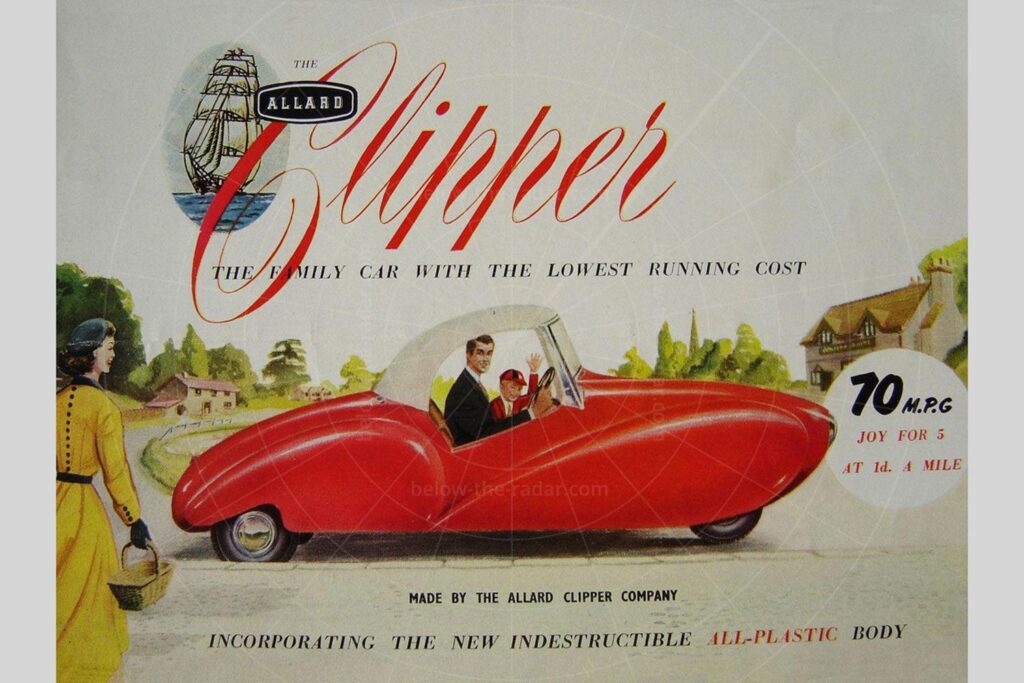The Allard Clipper is a three-wheeled microcar designed by David Gottlieb, who commissioned the Allard Motor Company to produce two prototype chassis and a self-coloured fibre-glass body. It is powered by a rear-mounted Villiers 24B 346 cc (21 in3) single-cylinder two-stroke motorcycle engine connected by triple “V” belt drive to a Burman gearbox driving the left rear-wheel via a chain.[1][2]
Production began at the Encon Motors workshop site in Fulham in 1954,[1] but the car’s weak transmission and cooling problems made it “woefully unreliable”. It was one of the first British-built vehicles to use a fibre-glass body,[3] but the manufacturer, Hordern-Richmond, was inexperienced with the technology, resulting in rising costs and the cancellation of the project after only about twenty units had been produced.[1]

Below the Radar
The motoring journalist Chris Rees has described the Allard Clipper as an “almost wilfully odd and desperately crude device”.[3] It was probably one of the last cars to offer the option of a dickey seat, known in America as a rumble seat, in the rear boot.[2]

